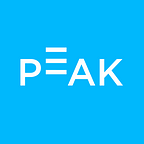The Neuroscience of Improvisation: Where Genius Rap Lyrics Come From
(Image)
Around the world, people recognize iconic, original rap lyrics from moguls like Jay-Z, Biggie, and Tupac Shakur. And lyrical genius isn’t limited to a small handful of “rich and famous” stars: in fact, improvisation is a core part of human culture and a skill that people young and old can cultivate, from students freestyling to poets penning verses to amateur improv actors coming up with dialogue in a scene they invented on the spot.
So, how can you find your own genius rap lyrics? Let’s take a look at some of the neuroscience behind improvisation, the spontaneous and sometimes baffling Wild West of human creativity, to understand how it’s different from other creative thinking.
The first clue comes from research on improvisational musicians.
A study invited a dozen rappers to come to a lab and spit rhymes while laying down in an fMRI machine. (How’s that for an intimate performance venue?) The artists performed in two conditions: in the improv condition, they freestyled to a beat track, and then for comparison, they recited pre-memorized lyrics to the same track.
When the scientists looked at the scans, they found that the brain was using different functions when it was improvising compared to when it was reciting memorized words. The scans showed activation of certain parts of the brain’s prefrontal cortex that are responsible for organization and motivation, and interestingly, it showed deactivation of brain areas responsible for executive functions like self-monitoring and conscious control.
So perhaps the brain’s deactivation of certain areas were able to quiet the artist’s inner filter for less self-censorship, letting free and wild connections flow through.
“We think what we see is a relaxation of ‘executive functions’ to allow more natural de-focused attention and uncensored processes to occur that might be the hallmark of creativity,” says Allen Braun, a lead author of the paper.
(This study was inspired by previous research on jazz pianists which showed similar results. If you think rapping while holding steady and laying on your back in an fMRI machine is hard, imagine what it must have been like for the piano improvisers, brain-in-scanner, tapping away at non-magnetic pianos specially designed for the study.)
If we look at existing theories human imagination and the brain, we see that indeed, turning “down” some control activities in your brain actually accompanies turning “up” the functions thought to be associated with creativity and spontaneity.
Scientists point to three kinds of brain networks involved in creative thinking, and one of them in particular is believed to be responsible for imaginative thinking: the default mode network. It’s most active when other creative thinking functions are quiet.
To understand why this happens, let’s first look the executive attention network and salience network.
The executive attention network lets us focus on specific tasks, putting all our attention in one direction, like solving a puzzle or losing track of time while playing a board game. It helps us focus, plan, and use memory.
The salience network monitors events you perceive externally and internally, prioritizes the most important ones, and sends signals to the brain about which ones to process. The term “salience” refers to things that stand out, and it’s a critical survival tool because it prioritizes the most important stimuli in your environment. For example, if you go for a hike in nature, you’re processing a steady visual stream of stones and trees passing by, birds flying ahead, a big brown bear — wait, a bear? Now there’s something to pay attention to. That’s your salience network at work.
The default network, or default mode network, is a special network in the brain which researchers believe is responsible for processing thoughts about yourself, sorting experiences and memories, and thinking about the future. Some scientists call it the imagination network. It becomes active when there is no specific goal-directed task, so when your executive attention network is less activated, your default network activity jumps up.
The default network was discovered in a series of studies where participants were asked to perform difficult tasks. Once they started a task, certain parts of the brain reduced their activity to a low level in the background, and when they stopped, those reduced-activity areas jumped up again. These brain functions seemed to return to a default activity level whenever there was no specific task to focus on.
Lead researcher Marcus Raichle explains why the default network keeps our brain working even in quiet moments, “We conventionally tend to think that when we are not busy doing such things, our brain is “free,” or more passive, and we automatically think that we primarily use the brain to solve difficult tasks, or control goal-directed activities.”
But it seems that the brain is working in the background to make connections and associations. This is why insights can feel like they come out of nowhere. You may be taking a daydreamy walk, and all of a sudden a solution to a tough problem at work pops into your mind.
Improvisational artists like rappers and jazz musicians are no stranger to this feeling that their best music comes from something outside of themselves. As hip-hop mogul Jay-Z put it, “It’s how a basketballer must feel when he starts hitting every shot, when you’re in that zone. As soon as you start, you get that magic feeling, an extra feeling … I spend a lot of time fighting myself to stay out of the way of a great song.”
